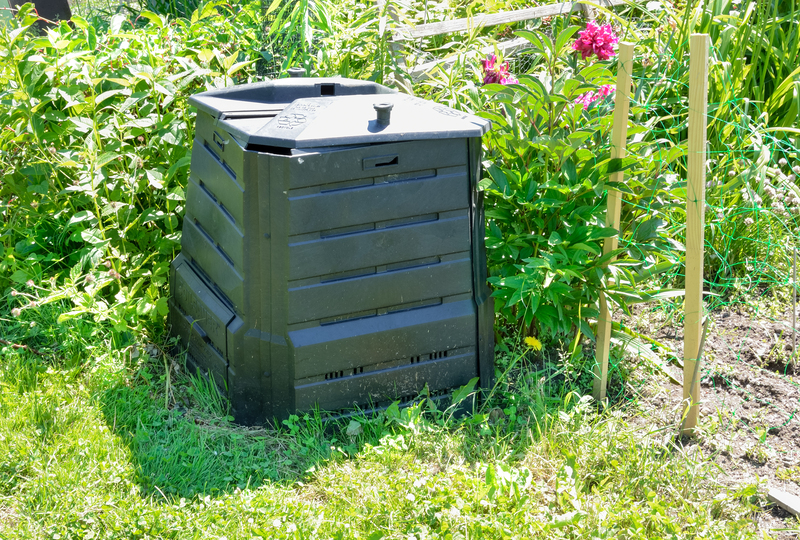Achieving Balance: The Art of Minimalist Living
Minimalist living has grown in popularity as more people seek simplicity, clarity, and meaning in their everyday lives. In our fast-paced, consumer-driven world, the concept of achieving balance through the art of minimalism is an attractive antidote to clutter, stress, and overwhelm. But what does it really mean to live minimally, and how can you start integrating its principles into your own lifestyle? This article explores the essence of minimalist living, provides practical tips for implementation, and demonstrates the profound benefits of cultivating a balanced, purpose-driven existence.
What Is Minimalist Living?
At its core, minimalist living is about intentionally focusing on what truly matters and letting go of the excess. It is the conscious pursuit of the things that add value to your life, while eliminating anything that is distracting, unnecessary, or burdensome. Minimalism is not solely about having fewer possessions--it's a comprehensive lifestyle choice that prioritizes quality over quantity in every aspect of your existence.
- **Physical possessions:** Clearing away material clutter to create a space that feels organized and peaceful.
- **Mental clarity:** Letting go of thoughts, beliefs, and habits that no longer serve you.
- **Emotional simplicity:** Focusing on meaningful relationships and activities.
- **Balanced routines:** Making room in your schedule for rest, creativity, and personal growth.
The History and Philosophy of Minimalism
Minimalism draws inspiration from philosophical traditions such as Stoicism and Buddhism, which both encourage detachment from material possessions and an emphasis on inner peace. In the 20th century, minimalist art and design emerged, championing the idea that "less is more." Over time, this philosophy has migrated beyond art and architecture into the realm of everyday living.
Today, minimalist living is adopted by people from all walks of life seeking balance and fulfillment through intentional choices. Whether you live in a sprawling farmhouse or a compact city apartment, you can incorporate principles of minimalism to create a more balanced and meaningful lifestyle.

Why Choose Minimalism for Achieving Balance?
The relentless pace and consumerism of modern culture can leave us feeling scattered and unsatisfied. Choosing a minimalist lifestyle enables us to reclaim our attention, free up our time, and reconnect with what truly matters.
Key Benefits of Embracing Minimalist Living:
- Reduced Stress: Fewer possessions and obligations mean less to worry about and maintain.
- Improved Focus: Clarity in your environment leads to clarity in your mind.
- Financial Freedom: Buying less allows for greater savings and financial security.
- Environmental Impact: Consuming less reduces waste and promotes sustainable living.
- Greater Joy: Freedom from clutter leaves more room for what brings you happiness and purpose.
Minimalism isn't about deprivation--it's about liberation. By making deliberate choices, you create space for what you love, enhanced well-being, and a deep sense of balance.
Practical Steps to Begin Your Minimalist Journey
Ready to embrace the art of minimalist living? Here's a step-by-step guide to help you start achieving balance through minimalism:
1. Clarify Your Why
Every significant lifestyle change starts with intention. Before decluttering, ask yourself why you want to live a more minimal life. Is your goal to reduce stress, save money, travel more freely, or simply make room for new opportunities? Write down your motivations and keep them visible to remind yourself during challenging moments.
2. Declutter Your Physical Space
Start small. Choose one drawer, shelf, or room at a time. Evaluate each item and ask:
- Does this add value or joy to my life?
- Do I use it regularly?
- Would I buy it again?
Minimalist living encourages gratitude for what you keep and freedom from what you release. Donate, recycle, or sell items you no longer need, and create a home environment that feels light and peaceful.
3. Rethink Your Consumption Habits
Minimalism isn't just about clearing out--it's also about mindful consumption. The next time you consider a purchase, reflect on whether it aligns with your values and goals. Try implementing the "one in, one out" rule: every time a new item enters your home, something else must leave.
4. Simplify Your Digital Life
Digital clutter can be just as stressful as physical mess. Unsubscribe from newsletters you don't read, clear out unused apps, and organize your files for easy access. Limiting your screen time and curating your online experiences can free up attention and enhance your well-being.
5. Foster Meaningful Relationships
Achieving balance through minimalist living isn't just about things--it's about people. Focus on nurturing relationships that inspire, support, and uplift you. Say goodbye to toxic or energy-draining connections, and invest time in those who matter most.
6. Create Simple, Balanced Routines
Minimalism applies to your schedule, too. Are your days filled with obligations you don't truly enjoy? Evaluate your commitments and let go of activities that feel more draining than rewarding. Allow space for rest, creativity, and spontaneous joy. A balanced routine is a foundation for a balanced life.
7. Cultivate Mindfulness and Gratitude
Minimalist living and mindfulness go hand in hand. Practice being present in the moment, savoring the little things, and expressing gratitude for what you have. This fosters a sense of contentment and abundance, a key element in achieving balance.
Common Myths About Minimalist Living
Despite its many benefits, minimalism is often misunderstood. Let's dispel some of the most common misconceptions:
- Myth 1: Minimalism means owning almost nothing.
Fact: Minimalism is not about deprivation; it's about intention. The right amount of possessions varies for everyone. - Myth 2: You must live in a tiny home.
Fact: Minimalism is for everyone, regardless of the size or style of their living space. - Myth 3: It's only for single people or couples without kids.
Fact: Families can thrive with minimalist principles by teaching children the value of simplicity. - Myth 4: Minimalism is boring or joyless.
Fact: When you focus on what matters most, life becomes richer and more meaningful.
Minimalist Living and Balance in Everyday Life
When you intentionally pursue minimalism, you unlock new possibilities for balanced living in every domain:
Minimalism at Home
- Decluttered Spaces: Neat, functional rooms reduce anxiety and distraction.
- Calming Decor: Neutral colors and natural materials create a serene atmosphere.
- Quality Over Quantity: Invest in items you truly love and use daily.
Mindful Minimalism at Work
- Organized Workspaces: Clear desks promote focus and productivity.
- Efficient Systems: Streamlined routines and digital tools save time and reduce overwhelm.
- Intentional Commitments: Say no to tasks that distract from your core priorities.
Minimalist Living on the Go
- Travel Light: Packing only the essentials leads to freedom and flexibility while traveling.
- Flexible Plans: Embrace spontaneity and release the need to schedule every moment.
Emotional and Mental Minimalism
- Letting Go of Guilt and Perfectionism: Pursue progress, not perfection, in every area.
- Releasing Comparisons: Focus on your unique journey, not what others are doing.
Sustainable Minimalism: Caring for the Planet
A lesser-known advantage of minimalist living is its positive environmental effect. By reducing consumption, we lower our ecological footprint and avoid unnecessary waste.
- Buy Less, Buy Better: Choosing quality over quantity means fewer replacements and less waste.
- Embrace Reuse and Recycling: Donate, repair, or repurpose items rather than discarding them.
- Support Ethical Brands: Purchase from companies that value sustainability and fair labor practices.
Minimalism goes hand-in-hand with eco-conscious living. By making mindful choices, we protect our resources and ensure a healthier world for future generations.

Tips for Maintaining a Minimalist and Balanced Life
Adopting a minimalist lifestyle is a journey, not a destination. Here are some tips to help you sustain your new habits and cultivate a balanced life:
- Schedule Regular Declutters: Set aside time each month to reassess your space and belongings.
- Practice Mindful Shopping: Take a moment before making purchases to reflect on their necessity and alignment with your values.
- Set Clear Boundaries: Learn to say no to commitments and possessions that add little value to your life.
- Connect With Community: Find accountability in friends or online groups who share your minimalist values.
- Celebrate Progress: Reflect on the benefits you've gained as a result of simplifying your life, and use these wins to motivate continued growth.
Conclusion: Embrace the Art of Achieving Balance through Minimalist Living
In a world that constantly urges us to do, own, and be more, minimalist living is a radical, refreshing approach. It teaches us to focus on what matters, discard the superfluous, and create space for joy, peace, and genuine connection. By embracing the art of minimalism, you can achieve a more balanced, harmonious, and fulfilling life.
**Start your minimalist journey today--simplify, declutter, and make room for what matters most.**
Remember, the greatest rewards of minimalist living aren't found in empty shelves or blank walls, but in a heart and mind free to savor life's richest experiences. Choose balance. Choose simplicity. Choose minimalism.